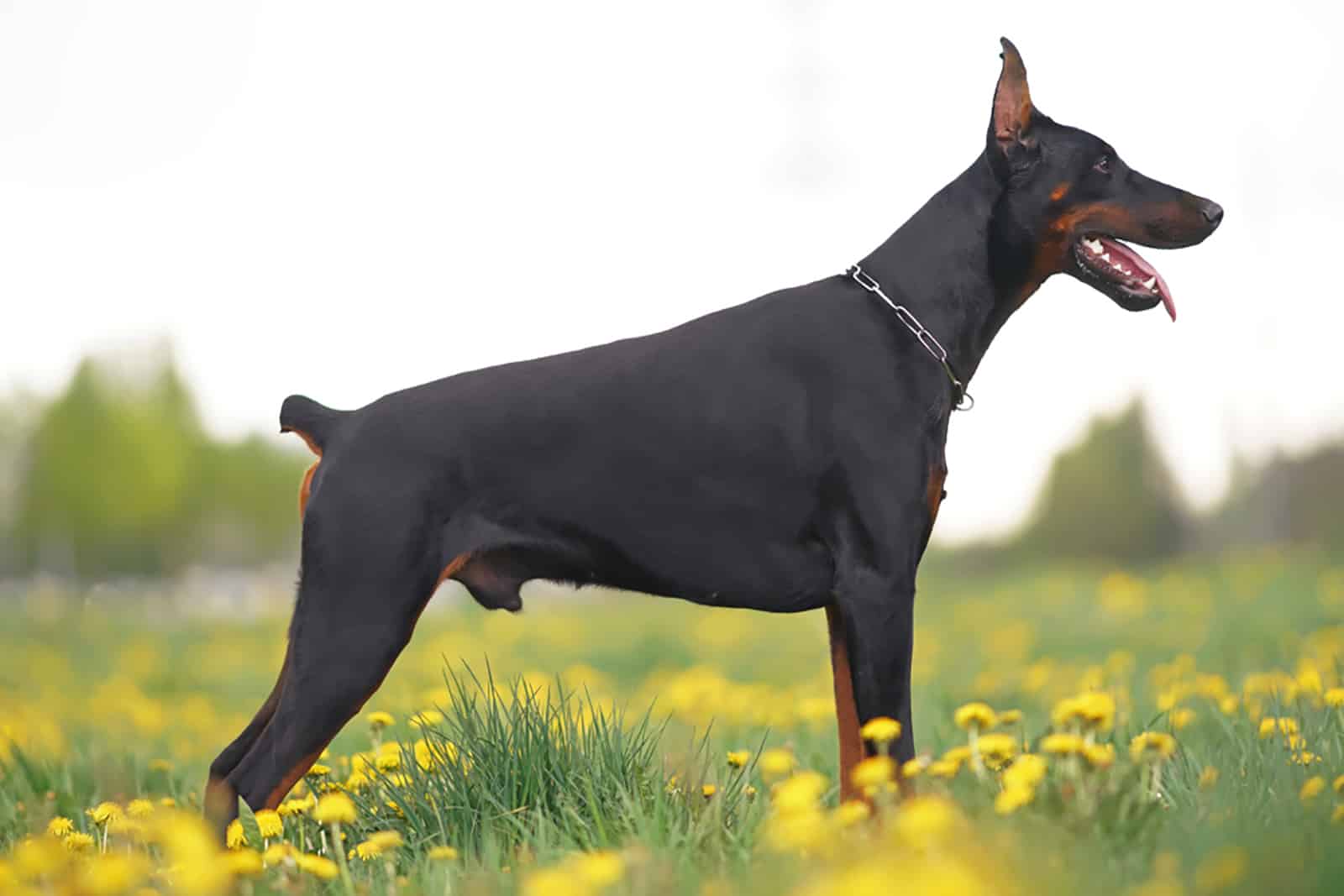Would it surprise you if I told you that Doberman pinschers have long tails? Probably not, but the majority of people will envision a Doberman with a docked tail when asked to describe one.
The tradition of tail docking in Dobermans had been set in stone for tens of years before being scrutinized by animal medical associations.
By the time you read this article, you should be able to come to your own conclusion on whether Doberman tail docking is something you agree with. First things first, let us talk about the facts of this procedure.
Is Doberman Tail Docking Necessary?
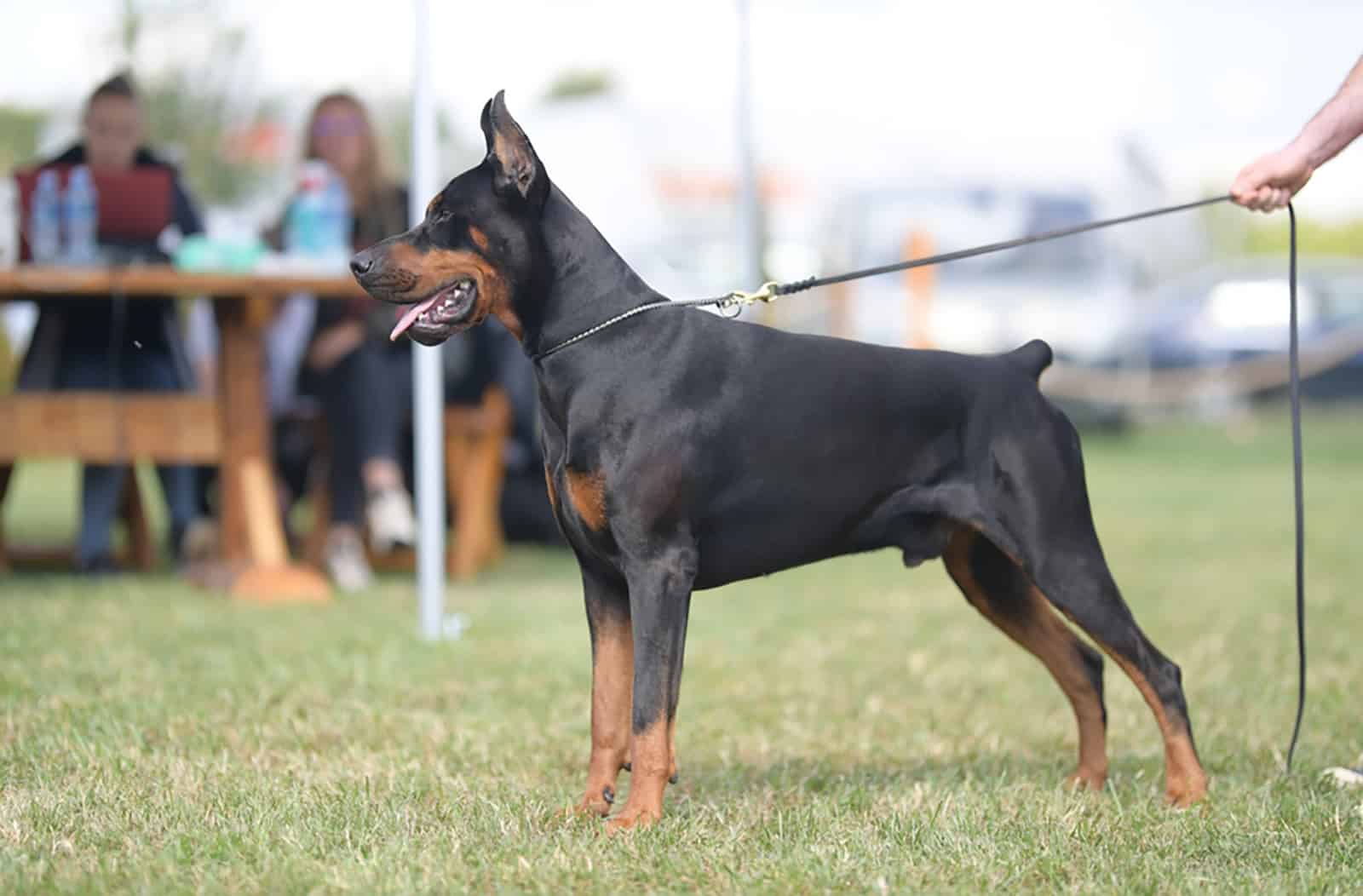
There are two answers to this question. Though both are objectively correct, their interpretation is purely subjective.
We can talk about breed standards and still make things very confusing, as not every part of the world has the same rules on body alteration.
In medical terms, there is no reason to dock your Doberman’s tail. Anatomically, the tail serves a major role in the dog’s movement, and removing a portion of it might cause stability or agility problems.
However, there are instances where health problems require surgery on the tail. The American Veterinary Medical Association (AVMA) states that tail injuries or conditions that require docking are not a common occurrence.
This question can be answered from the perspective of owners who participate in dog shows and conformation events too.
If you are in the tradition preservation camp, you will most likely be aware that the American Kennel Club (AKC) has strict rules on breed standards.
A Doberman pinscher’s tail must be docked in a way that makes the tail appear as a continuation of the spine. They recommend docking the tail approximately at the second joint (vertebra).
Without a tail dock, your dog will not be eligible to participate in AKC conformation events.
This begs the question of why Doberman tail docking has been deeply established in the AKC and other kennel clubs’ breed standard. The answer is just below.
What Is The Purpose Of Docking A Dog’s Tail?
The purpose of docking a Doberman’s tail can be to adhere to the breed standard, sticking with the “traditional” Doberman look or, in case of an injury or health problems, due to medical reasons like tumors.
When and where did Doberman tail docking originate? This answer requires a little more than a single line of text, so bare with me.
Historical Reasons
When In Rome…
The great Roman Empire has left us a thing or two we still use in our daily lives. Needs drove innovation and pioneering to bring to life some of the most amazing inventions.
Among them, there were duds too. I will put dog tail docking under the “not so great” category.
Animal medicine was essentially a non-existent discipline back in Ancient Rome. Shepherds and farmers believed that cutting portions of a dog’s tail and tongue would reduce the spread of rabies.
The advancement of technology and medicine busted this myth rather easily.
One reason for tail docking that actually makes sense was applicable on working dogs. Rottweiler and Mastiff ancestor breeds were used for pulling carts and heavy lumber sleighs.
The rope that connected the animal and the load it pulled would often catch the dog’s tail and cause injury. This incentivized the owners to cut the tail with the aim of preventing injury.
The tradition that many kennel clubs and breeders fight to preserve had its roots in a practical role that is now outmoded. A dog’s primary role nowadays is companionship. That does not require tail docking.
Misery Loves Company
The great majority of citizens of Ancient Rome and middle-age kingdoms were known to be poor.
Owning a dog was not cheap back then either, and owners mostly fed them scraps. A hungry dog had immense prey drive and would relentlessly hunt game.
Being underprivileged in addition to being poor meant that the rules were not equal for those with higher social status.
Lawmakers decided that poor people should be kept that way and started cutting off their dogs’ tails.
How does the dog’s tail influence their material gain (or lack thereof)? Since dogs were mainly used for hunting game, cutting the tail was believed to cripple their ability to run fast and stay agile. It was also a way to mark the dog as a “working dog”.
Dogs had the role of companion in the middle ages too, but the owners had to pay taxes for that pleasure. Clearly, tail docking was also a sign of social status.
More Cutting To Help The Hunting
Many centuries after the ancient romans and the middle ages, dogs were still the best hunting associates a man could have.
Their tails, once again, suffered for “practical reasons”.
Hunting ducks was leisure as much as it was a way to put food on the table (literally). Needless to say, the hunter was not going to run a hundred yards to retrieve the duck from the pond. For that purpose, they employed retriever dogs.
These dogs would dash across the field, make their way through thorny bushes and swim to retrieve the duck.
During that activity there were many things that could hamper the swiftness of retrieval, so the hunters decided that docking their tails would be a good precaution.
What things am I talking about? For starters, getting their tail stuck in thorny bushes. Thorns are dangerous (as we all probably experienced) and would rip the skin of the tail.
This, in turn, would make the dog stop in its tracks and unable to do its job properly for a couple weeks.
Cocker spaniels, Boxers and Schnauzers, for example, had their tails docked to prevent rodents and other animals from biting their tail while the dogs were on hunting duty.
Poodles had their tails docked because hunters thought their tails slowed them while swimming.
Beauty And The Breed
We already established that the American Kennel Club has a clear rulebook on how a Dobermann pinscher should look like.
Since the inception of the AKC, there was always a “standard” of dog beauty to strive for.
The Complete Dog Book by the AKC is a rather old piece of literature that confirms that tail docking in Dobermans had no pragmatic function once the breed was not used as a working dog anymore.
It was simply a method of body alteration for pleasing the human eye.
The Doberman breed is commonly used as a service or guard dog which does not require, or validate the practice of tail docking. When in doubt, leave it undocked.
To this day, the AKC is adamant that what animal associations and veterinarians deem as “just cosmetic reasons” is, in fact, the preservation of the breed’s traditional look.
Obviously, there is no attempt from the AKC to argue a functional role of the surgical procedure.
The United Kingdom and Australia were among the first proponents of legislation that would ban tail docking for cosmetic purposes.
The amendments to that legislation also included changes to the breed standards that now require a dog to be undocked.
What Is The Procedure For Tail Docking?
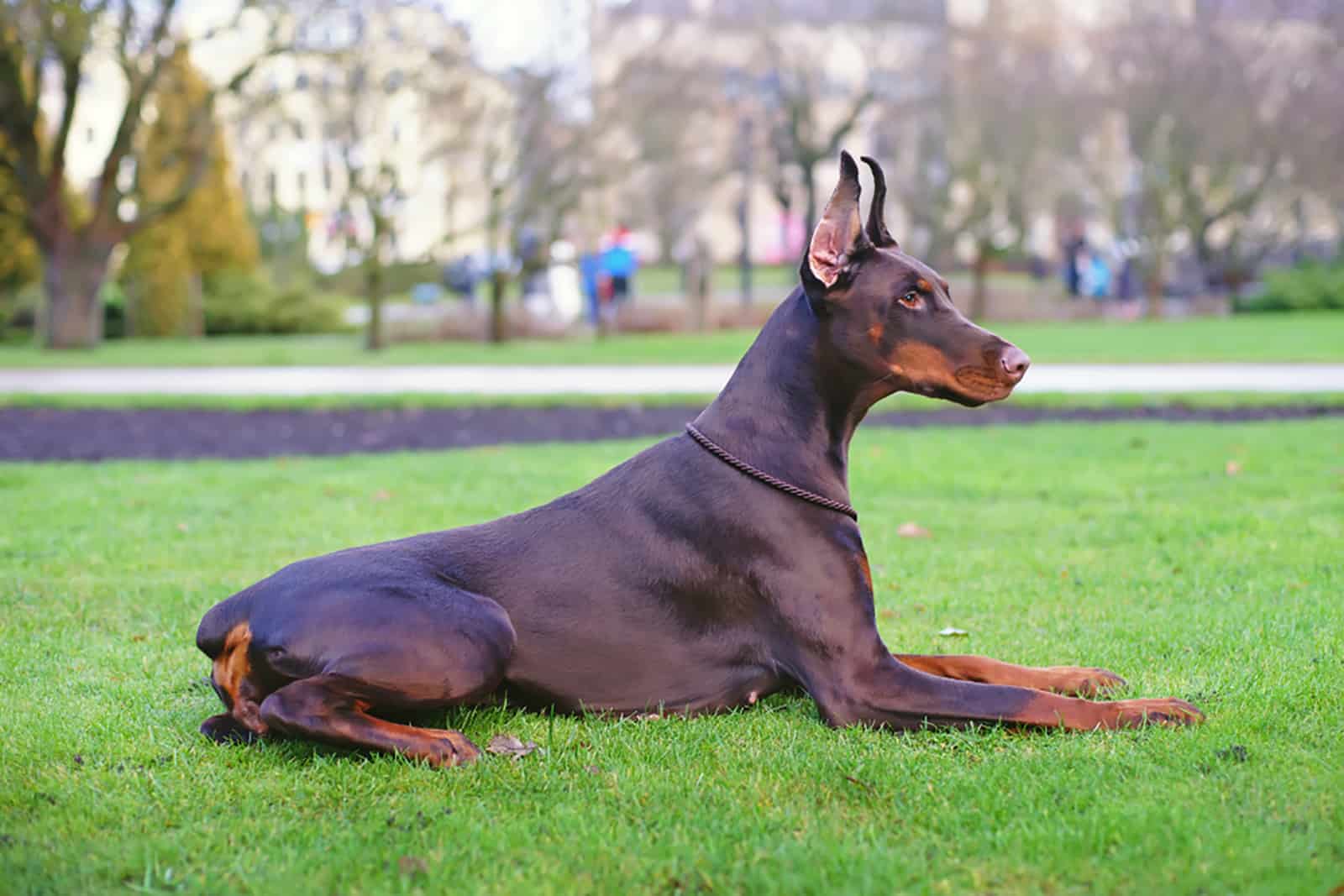
While there are more than one ways to dock a tail, the most common, by far, is surgery. Animal welfare activists and animal medical associations are resolute in their stance on tail docking — it is textbook amputation.
As you will see further down in the article, the big technological leap allowed for less painful and quicker approaches to tail docking. They, however, come at a higher cost and are not as widely available as the usual methods.
Preparing For A Doberman Tail Docking
This procedure includes more than just showing up at the veterinarian’s office and asking for your dog’s tail to be docked.
Different veterinarians can have different levels of skill in performing the procedure.
Some are specialized in performing tail docking on certain breeds or even certain types of tail docking. This means that you will have to find out which veterinarian has good references for Doberman docking.
Since the procedure involves cutting off a substantial portion of your Dobermann’s tail, you should not risk complications by choosing a veterinarian you are not one hundred percent confident in.
For breeds that can have several types of docks length-wise, you should find and bring a photo of the dock you wish your veterinarian to perform.
Surgery
The most common tail docking technique is performed with a scalpel and includes removing a shorter or longer segment of the dog’s tail. If you recall, the breed standard for Dobermann tail docking requires cutting off almost the entire tail.
Surgery cannot start before the veterinarian does a number of laboratory tests to determine whether the dog’s blood work and general physical condition is good enough to survive the use of a general anesthetic.
Once the anesthesia makes your dog unconscious, the veterinarian will mark the exact location where the cut will be performed.
The second vertebra is the ideal location for a Dobermann tail dock. The hair from the tail will be shaved off to avoid infection and allow a clear look at the tissue.
The incision site will be sterilized and the unwanted part of the tail cut off with surgical scissors or scalpel. After cutting off the muscle, nerves, bone and cartilage tissue, the vet will use the excess skin to close the “new” tail tip.
The type of suture depends on the vet, but he will choose between regular synthetic or self-absorbable ones. In both cases, you will need to bring your Dobermann for a checkup two weeks after surgery.
Keep in mind that this procedure is risky with adult dogs but pretty quick, and with a minimal recovery period, in puppies. Puppies have their tails docked when they are one to five days of age.
The procedure will be painful for the puppy regardless of its young age, and veterinarians recommend the use of small doses of local anesthetic to ease the pain.
Many breeders have their puppies’ tails docked without any anesthetic. One reason is medically sound — puppies are too weak and underdeveloped to survive general anesthesia.
The second is a myth that says puppies do not feel the pain and cannot remember it once they are adults.
Banding
This method of tail docking can only be performed on Doberman puppies. It is pretty simple and consists of using a strong rubber band that is put around the dog’s tail. The placement of the band depends on the type of dock.
After obstructing the blood flow into the dog’s tail, all the muscle, nerves and bones will die off causing the “excess” part of the tail to fall off. The time it takes for the tail segment to fall off depends on the dog, but it usually happens within a few days.
There is almost no recovery period because the wound starts closing as soon as the tissue dies off. Puppies at that age are still unable to reach for their tail which is why this is considered to be an effective method of tail docking without complications.
Commercially available bands such as those sold on Amazon are not recommended and the banding should be performed by an experienced person, ideally a veterinarian.
Laser & Electrosurgery
These two methods of surgery are still not standard in tail docking. Whether due to their cost or regional availability, they are not performed as often as the previous two procedures.
There are benefits to having your dog’s tail docking procedure done by laser or unidirectional current.
For starters, there is no blood during the procedure. This allows for more precision and less damage to the tissue on and in the tail. As with every procedure, there are possible complications like burns or shock.
What Happens When A Dog’s Tail Is Not Docked?
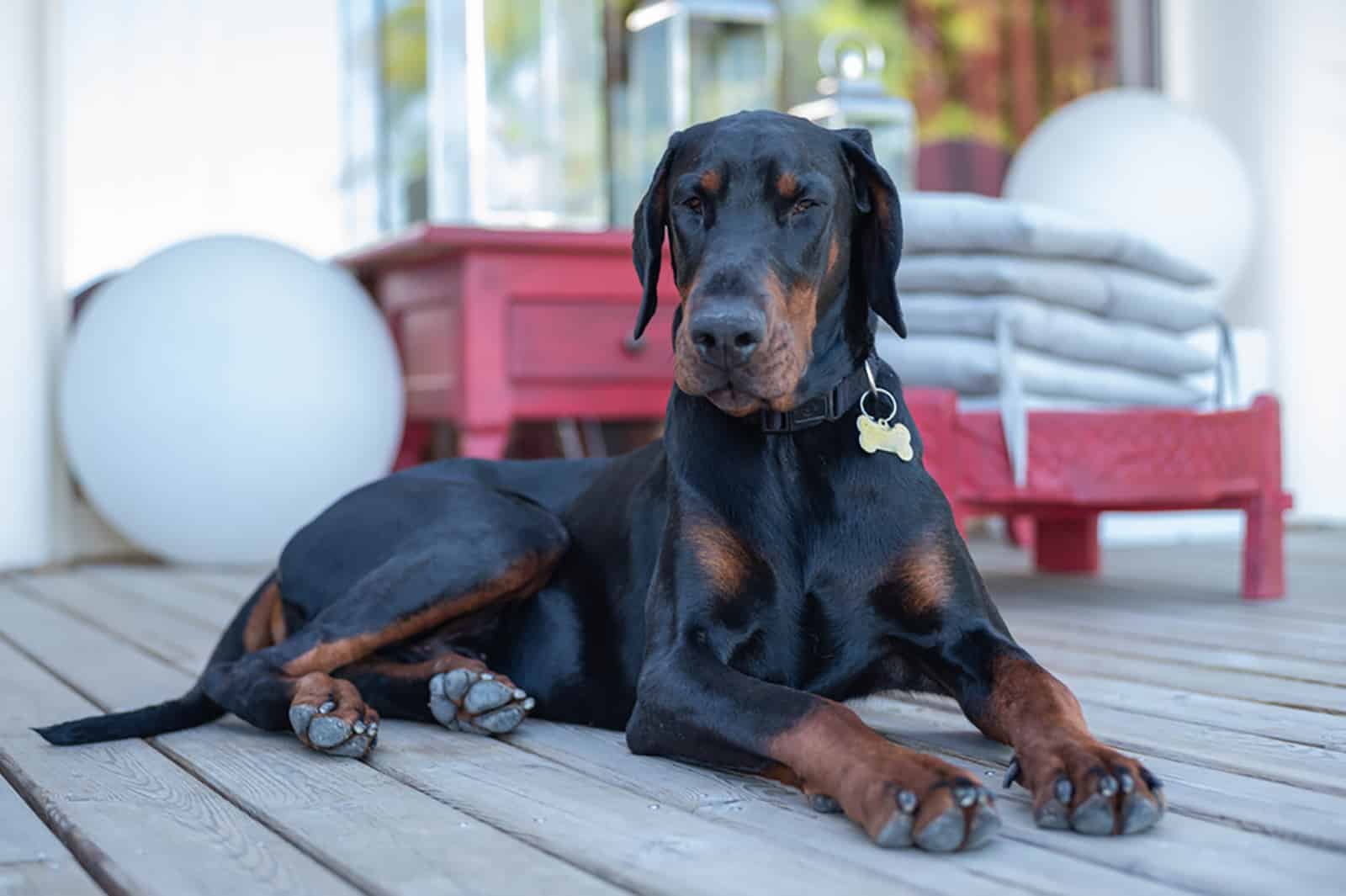
Nothing happens. The dog will have its tail in a natural state. Most purebred dogs are born with a tail, but there are several breeds of dogs that are not.
The latter category is called natural bobtails and includes breeds such as Corgis, English Bulldogs, Stumpy tail cattle dog and more.
Worst case scenario, you will not be able to participate in conformation events or other AKC competitions where breed standards apply. A natural Doberman is, in my book, better than one with a docked tail.
Is It Cruel To Dock A Dog’s Tail?
Any limb amputation that is not medically required is cruel. Tail docking of dogs is an amputation in medical terms and there are no objective reasons that warrant cosmetic alterations.
Even though the argument that a puppy’s nervous system is not sufficiently developed was considered a fact for a long time, the National Library of Medicine has proven the opposite — puppies do feel pain.
Some techniques such as banding are considered less cruel because of the way the tail “naturally” falls off. You be the judge of that.
Dog owners are responsible for the choices they make for their dogs, and such decisions should not be made without serious consideration.
Ear Cropping And Dewclaw Removal For The Full Doberman Look
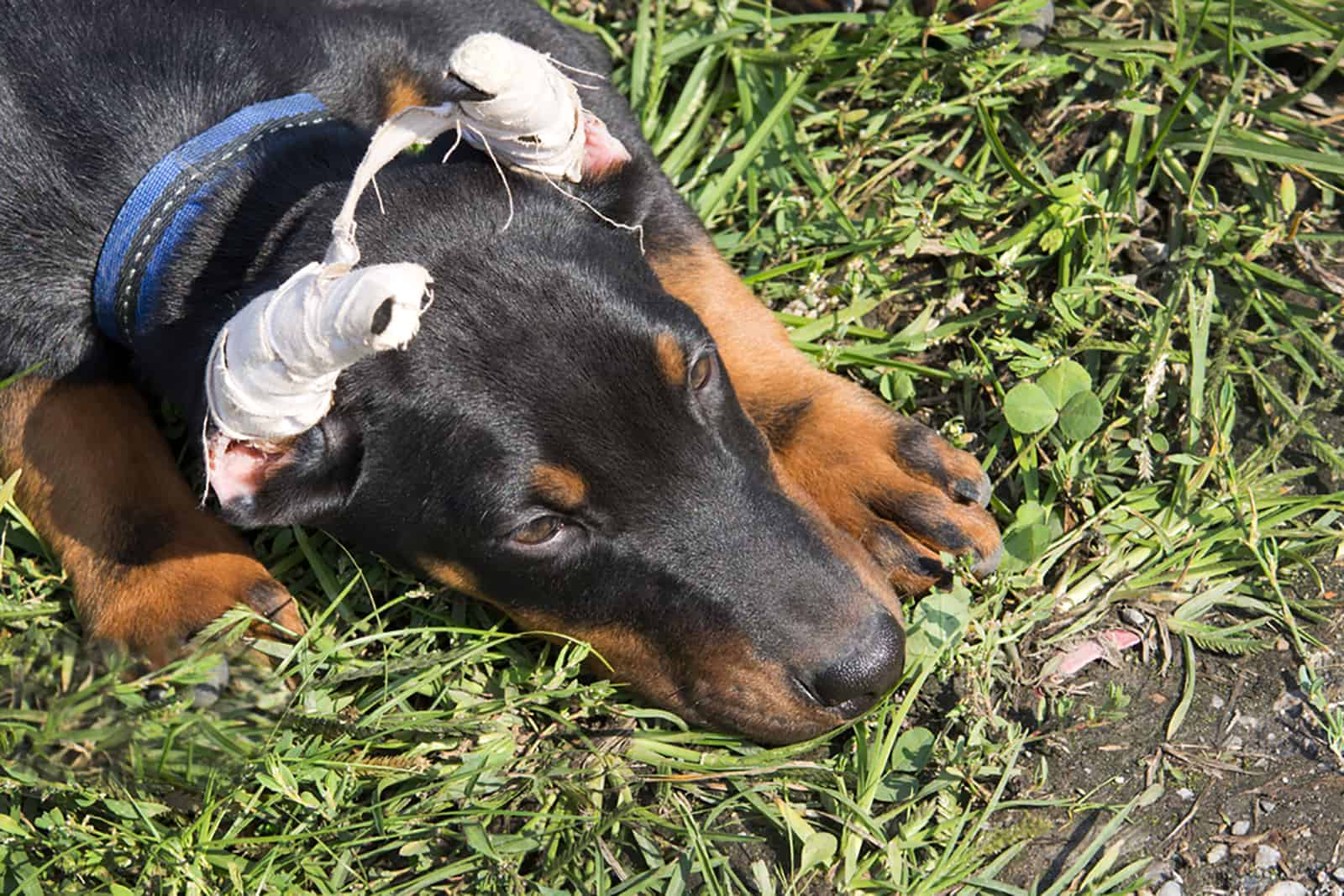
So, you decided to transform your Dobermann’s long tail into a short tail. What other things do you need to do in order to conform to the AKC breed standards?
There are two procedures that are commonly performed on certain dog breeds: ear cropping and dewclaw removal. Let us go through some myths surrounding these two.
Ear Cropping Reduces The Risk Of Ear Infections
A Dobermann is born with floppy ears, just like a Rottweiler, Schnauzer or American Bulldog. It can come as a surprise for many people who are used to seeing them with erect ears.
A dog’s ears are the second most important information collecting organ. Then why is ear cropping on a Dobermann popular and deemed a breed standard by the AKC?
From a stylistic point of view, the Dobermann looks more imposing with erect ears. Seeing how they are primarily used as guard dogs, people chose to “improve” the mean look by cropping their ears.
The always upright position of the ears creates an illusion that the dog is constantly alert and vigilant. That can be the case with a Dobermann who has floppy ears.
A long standing assumption was that dog’s ears are more prone to ear infection if left floppy. This is not true because one of the most floppy eared dog breeds — the Beagle, have one of the lowest ear infection incidence rates.
Dewclaw Removal Prevents Foot Injury
There are some people that are clumsier than others. Would you remove their thumbs simply because of a possibility it might get caught in the door? I do not see how that makes sense.
Dewclaws act as joint stabilizers when a dog is sprinting. To avoid dislocating their joint, the dewclaw provides a point of contact with the ground. Another use for these “dog thumbs” is climbing trees.
Dogs do not do this often, but do not deprive them of the chance to do it.
I guess humans decided for dogs that dewclaw removal will help them lead their active lifestyle without worrying about it getting caught in the fence. Similar to tail docking, dewclaw removal should only be done if medically necessary.
Summary
You might still think that Doberman tail docking is not that big of a deal. People can agree or disagree, but you will always control the fate of your dog’s tail.
Are cosmetic alterations worth putting the dog through tests, surgery and recovery? You know best.
For those interested in trophy hunting at AKC events, the procedures of tail docking and ear cropping might be worthwhile.
Others who got a Doberman as a companion or guard dog should reconsider what they, or the dog, will gain from weeks of hassling to get a bobtail.
If you ask me, I would leave the tail swinging and waving. For AKC competitions, I would skip them altogether. The dogs do not care about trophies anyways. The dog itself should be our trophy.
